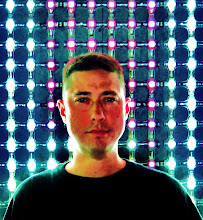Today's itinerary began with a quick trip to the renowned Aswan High Dam, completed in 1970, which (for better and worse) prevents the annual flooding of the river Nile and provides hydroelectric power to the region. We drove right across the top of the dam, stopping in the middle so I could hop out of the car and take a few photos. I have to admit I was a little disappointed, as I was expecting to see a really dramatic high wall of concrete like the Hoover Dam or the Gordon Dam I visited this March in Tasmania. But it's not like that at all--just a very wide, low embankment on both sides of the road; not much to look at at all. Still, it's considered a marvel of modern engineering, and was built using 17 times as much material as the Great Pyramid, which I suppose is pretty impressive in itself.
Our next stop was Philae Temple, another temple from the Ptolomaic period which was one of the victims of the dam's success: It originally stood on Philae island in the Nile (now Lake Nasser), but had to be moved to higher ground when the dam flooded its first location. They did a very good job of relocating the temple, though, and landscaped the new island just like the old one. To get to the island, Hossam and I had to be ferried by small boat across the lake, which was kind of a neat way to approach an ancient temple. Like all of the temples I've seen, this one had some interesting columns, carvings, and statues, although I'm afraid I can't single out one to comment on! I guess the temple's location, isolated on a small rocky island, was the most notable thing about it.
Unfortunately, then it was time to visit another tourist trap (IMHO), a perfume factory where some teenage "expert" tried unsuccessfully to convince me of the wondrous medical powers of various exotic extracts and scents. Blah blah blah. Oh, and they can exactly duplicate cK1 too, if you like the way that smells. I decided to pass.
Once that ordeal was over, Hossam took me down to the river for a ride on a honest-to-gosh felucca, one of those Nile sailboats with the tilted shark-fin shaped sails (apparently this is a must-do when you're in Egypt). Piloting our boat was a fat old guy at the rudder and a chain-smoking twelve-year-old working the sails. Neither was very good at getting the boat to move, though, as there was basically no wind. So we more or less drifted aimlessly in the river for 45 minutes or so without going anywhere, which I guess was supposed to be relaxing, but in reality was really irritating. FINALLY we made it to our destination, an island in the middle of the river that's home to the Aswan Botanical Gardens, a haphazard collection of tropical plants and trees (mostly tall palms) that makes for a pleasant enough rest stop. After about an hour there, I had to endure another eternity in the felucca before we finally made it to shore.

